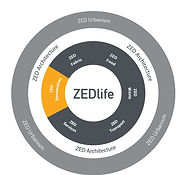top of page

After growing all that food, what happens to all the waste straw?
How about the decomposing food waste and everything else that we throw away in the city? This section looks at reclaiming energy from that waste...
In many urban projects about 3/4 of the annual energy demand can be met by solar energy with the remaining 1/4 being met by bio-gas energy produced from both dry urban and agricultural waste in a compact Pyrolysis carbon harvester.
What is Pyrolysis?
Pyrolysis is the process of heating organic or man-made carbon-based matter in the absence of oxygen. It’s essentially a high-tech equivalent to traditional charcoal making, only more efficient and controlled.
-
Under high temperatures and in the absence of oxygen
-
Matter breaks down into various gasses
-
Residual oil and solid char
-
There is no combustion and no emissions

Typical Installation
A 5 module plant could process 40,000 tonnes of waste a year and generate enough electricity for 10,000 households (based on the DTI’s Energy Review 2006).

AEPI Pyrolysis prototype Unit, Mitcham Junction, London

Gas Engine
Urban 1.88MWh / year + Rural 0.79MWh / year = Total 1.67MWh (e) / year


Monitoring Room
What contribution can pyrolysis make to a community?
A typical city household produces approximately 0.88 tonnes of MSW per year, which could generate approximately 0.88MWh per year.
The pyrolysis unit can normally produce from the city organic waste
26% of each homes annual electric demand
9.3% of each homes annual thermal demand
A typical household consumes approximately 2.41 tonnes of agricultural food crop per year
-
This quantity of crop creates 21 million tonnes of agricultural waste, or 0.79 tonnes per household.
-
This agricultural waste can form the input to a farm based pyrolysis unit, which could generate ( approximately 0.79MWhper year).
The pyrolysis unit can normally produce from the rural organic waste
24% of each homes annual electric demand
8.8% of each homes annual thermal demand
What materials can be Pyrolysed?

The oil composition will vary dependant upon the material being processed, and this will impact on the likely commercial opportunities for the product. However the calorific value is very high – up to 25% higher than oils produced by similar processes.
Energy rich, carbon char provides a number of opportunities for the production of additional energy. As a source of heat the char has an energy value better than coal. Better still, any contaminants that might have been present within the original material are destroyed during the process, leaving a clean smokeless product. Char also has various opportunities to be used in the form of activated carbons, and it has the potential to be placed directly on farm land to increase soil fertility.
Anything that is purely organic is absolutely ideal: Wood Chippings, Palm Husks, Any Crop Residues that you can think of… All we have to do is reduce the moisture to a suitable level before we start. With mixed waste, (Domestic or Commercial) the vast majority of material is either organic: e.g. food, textile, paper, card…. Or organic based products: Such as plastics, film, rubber, or part of a vast range of other materials derived from oil or other fossil fuels. Animal Waste, Meat & Bonemeal, Sewage Sludge all of these are ideal candidates for treatment with Pyrolysis. In essence, if it isn’t metal or mineral (so that includes glass) then assuming it’s solid, it’s Organic
Zero carbon zero waste strategy applied to urban high density masterplan

-
Direct use – on-site at point of production, the gas can be cleaned and either fed into a Gas Engine, Hydrogen Fuel Cell, or even used directly for industrial processes or cooking for example. This option requires preferably an electrical and thermal load situated nearby, to approximately match the output of the engine/fuel cell. Installations should be sized for the thermal demand to avoid heat dumping. Electricity, unlike heat, can be exported via the national grid to optimise utilisation of energy generated.
-
Storage and Distribution – Biogas can be compressed and liquefied much in the same way that Petroleum Gas is (LPG), and could be known as LBG, stored and distributed around the country much in the same way as Calor Gas is now. It can also be processed to a transport grade gas which is capable of replacing Petrol in converted vehicle engines.
-
Virtual BioGas – Biogas can be processed, cleaned, ‘injected’ back into the national gas network and purchased by consumers elsewhere. This is already happening in Austria and Germany, where farmers can benefit from proximity of existing waste streams without being hampered by the distance to the energy end user. This potentially sets up an urban/rural symbiosis, whereby a high-density urban development can fund the capital cost of installing a rural waste processing systems. Fuel Cells located in the heart of the city could take the Biogas from the grid, and convert it in a highly efficient process into heat and power where it’s most needed.

Straw can be used to make both construction materials and fuel the manufacturing plants and delivery vehicles making the first truly climate-neutral construction products such as Stramit board

bottom of page







